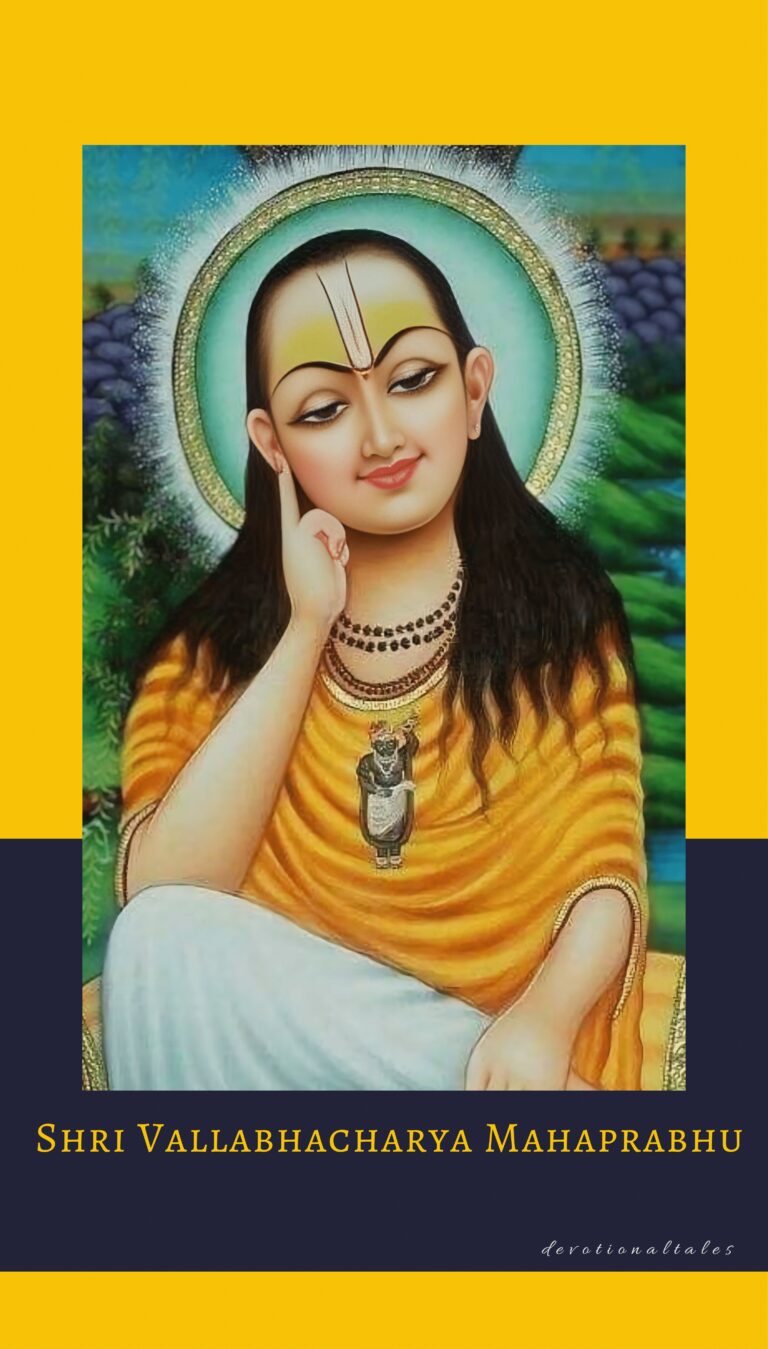
mahaprabhu Shri vallabhacharya

The Divine Incarnation
Throughout history, whenever righteousness wavers and the path of devotion becomes clouded by the impurities, a divine incarnation or a great saint descends to restore balance. Such an arrival is not just a moment of change but a profound blessing, making the world a sacred place.
Shri Krishna Himself assures in the Bhagavad Gita:
“Whenever there is a decline of dharma and a rise of adharma, O Arjuna, then I incarnate Myself.”
India has been blessed time and again with divine incarnations, enlightened saints, and revered gurus.
Among these great souls, one stands out with unparalleled brilliance—Jagadguru Shree Vallabhacharya Mahaprabhu Ji —a profound scholar, philosopher, and preacher of the highest order.
His purpose on earth was clear: to guide and elevate the souls. To fulfill this mission, he established Pushti Marg, the sacred path of divine grace, leading seekers towards the boundless love and blessings of Lord Krishna.
Shree Vallabhacharya Ji was born on an auspicious day—Chaitra (Vraj-Vaishakh) Krishna Paksha Ekadashi, 1478 A.D. (Vikrami Samvat 1535)—in the holy land of Champaranya, which is now in Chhattisgarh, India. He was born into a Telugu (Tailang) Brahmin family, to his religious parents, Shri Lakshman Bhatt Ji and Shri Illammagaru Ji.
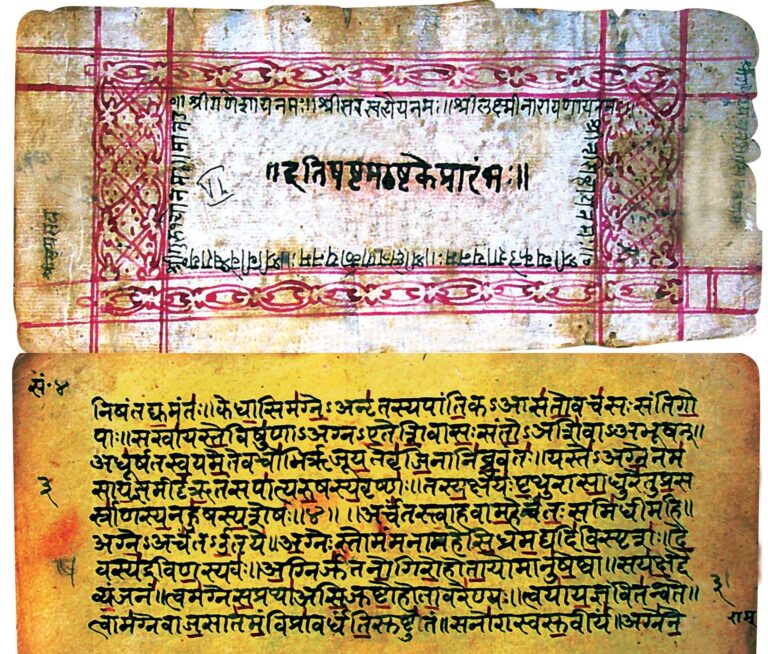
The Extraordinary Childhood
At the tender age of 6 years, Shree Vallabh was no ordinary child. While other children found joy in playing with toys, he was drawn to something far greater—the sacred wisdom of religious scriptures. Instead of spending his time with games, he immersed himself in the world of spiritual knowledge, treating books as his cherished companions.
His father, Shri Lakshman Bhatt Ji, a highly learned man himself, recognized the divine spark in his son. He took a deep interest in Vallabh’s education and ensured he received the best guidance. To nurture his intellect, he appointed the most erudite scholars, well-versed in various sacred disciplines.
By the time Shree Vallabh was just six years old, he was already diving into profound subjects. Under the mentorship of these esteemed teachers, he studied Aksharbhashya, Adhyatma Vidya (education of the Vedas), and Shad Darshan (six systems of Indian Philosophy).
His progress was nothing short of extraordinary. By the age of 10-11 years, he had already mastered all the major religious scriptures—the Vedas, Puranas, Smritis, Tantras—as well as various philosophical traditions, including Sankhya Yoga, Nyaya, Mimamsa, Jain, Baudhha, etc. from His father as well as various learned scholars.
With his sharp intellect and deep understanding, Shree Vallabh began engaging in discussions on intricacies of the meaning of the various doctrines. He critically analyzed doctrines such as Vishishtadvaita, Kevaladvaita, and Dvaita, demonstrating an insight that left even the most learned scholars in wonder.
His brilliance was put to the test when he visited Vyankateshwara and Lakshmana Balaji, where a scholar named Ravinatha tested his command over the Vedas.
To everyone’s amazement, Shree Vallabh flawlessly recited a hundred Vedic mantras—not just from beginning to end, but also in perfect reverse order!
His mastery over sacred scriptures was undeniable, marking him as a prodigy destined for greatness.

The Great Debate of Vidyanagar
From a young age, Shri Vallabhacharya displayed extraordinary intelligence. His grasp of scriptures was far beyond his age, making him a remarkable scholar even in childhood.
One day, he traveled to Vidyanagar to visit his uncle. When he arrived, he discovered that a grand Shastrarth (discussion) was taking place between the Vaishnavas and the Mayavadins. The locals informed him that the debate had been going on for some time, and the Mayavadins were on the verge of victory. Within a day or two, they were expected to completely defeat their opponents.
Hearing this, Shree Vallabhacharya could not remain a silent spectator. He felt a divine duty to defend the Vaishnav tradition. With unwavering confidence, he stepped forward and joined the debate. The Mayavadins, who had been confidently leading the discussion, suddenly found themselves facing Shri Vallabh’s sharp intellect.
He began questioning their arguments, challenging their philosophy with precise reasoning and deep scriptural knowledge. One by one, the Mayavadins faltered. The same scholars who had been certain of their victory now struggled to respond.
Their confidence shattered, and they had no choice but to accept defeat before the young but brilliant Shree Vallabhacharya.
This historic moment marked the birth of a new spiritual doctrine—Shuddhadvaita (Pure Non-Dualism). Shree Vallabhacharya’s triumph was not just a personal victory but the foundation of a philosophy that would guide generations to come.
News of his remarkable achievement spread quickly, reaching the ears of Krishnadev Rai. In admiration of Shree Vallabhacharya’s wisdom and devotion, Krishnadev Rai decided to honor him with a grand Kanakabhishek—a sacred ceremony in which he was bathed in water infused with pure gold.
As a respect, Krishnadev Rai also weighed Shri Vallabh in gold and offered him immense wealth.
However, Shree Vallabhacharya, ever devoted to service over material riches, accepted only seven gold coins—just enough to build a temple for Shrinathji. The rest, he generously donated to the poor, showing the world that true wealth lies not in gold, but in faith, humility, and the selfless service of God and humanity.

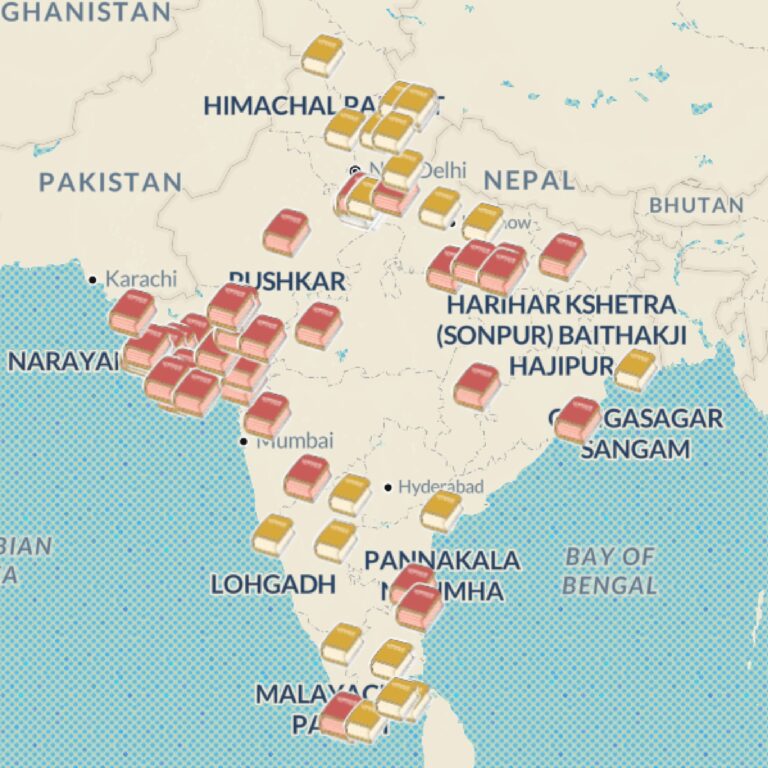
Shree Vallabhacharya’s Great Spiritual Journeys
Shree Vallabhacharya Ji realized that many had drifted away from true knowledge of the scriptures, and it became his mission to educate them and restore the forgotten teachings of the Vedas and Upanishads.
To fulfill this divine purpose, he embarked on three great spiritual journeys, traveling far and wide to enlighten people.
These journeys were not short or easy—they spanned an incredible fifteen years.
Walking barefoot, his grace traveled across the land, meeting people from all walks of life. His goal was clear: to teach the true essence of dharma and open the path of spiritual enlightenment to everyone, regardless of caste, creed, or gender.
Through his travels, Shree Vallabhacharya Ji reached thousands of people, explaining to them their true relationship with the Lord.
He restored the lost glory of the Upanishads and Vedas. His teachings were for the commoners, devotees, and seekers, offering them a path to spiritual awakening.
During these three great journeys, Shree Vallabhacharya personally met countless Daivi Jeevas (Human beings) and gave them the sacred Brahma Sambandh Diksha—a spiritual initiation that directly connected them to Lord Krishna.
Through this divine connection, they were accepted by Lord Krishna.
For fifteen years, he walked tirelessly, spreading wisdom, and guiding souls back to God. His spiritual journeys were a divine mission that transformed lives, ensuring that the path to truth and devotion remained open for all.
Even today, the impact of Shree Vallabhacharya’s sacred journeys continues to inspire countless devotees, reminding them that the way to God is always open, for those who seek it with true faith.

The Sacred Vows of Shri Vallabhacharya
Throughout his three great spiritual journeys, Jagadguru Shri Vallabhacharya Ji followed three strict and self-imposed vows, making his spiritual journey even more challenging yet deeply meaningful.
The three vows were:
- Walking barefoot – Shri Vallabhacharya never wore footwear throughout his journeys, covering an astonishing 12,000 kilometers on foot over his lifetime.
- Staying outside villages – Instead of seeking comfort in homes or temples, he always remained on the outskirts of the villages.
- Wearing only unstitched clothes – He dressed in nothing but a dhoti and a small piece of cloth (Uparana, throughout his life), symbolizing detachment from material comforts.
During these pilgrimages, Shri Vallabhacharya Ji used to meditate and engage in spiritual discussions with his followers in serene, peaceful locations.
The places where he paused to teach, meditate, and spread his divine knowledge came to be known as “Baithaks.”
Across India, there are a total of 84 Baithaks, each regarded with immense reverence by Vaishnavas to this day.
Through his tireless journeys, Shri Vallabhacharya Ji expanded his teachings and perfected his doctrines.

A Divine Command
During his travels, Shri Vallabhacharya Ji arrived in Pandharpur, the sacred land of Shri Vitthala (Panduranga). There, Lord Vitthala himself appeared before him with an extraordinary command.
The Lord told Shri Vallabhacharya to embrace Grihastha Dharma (householder life)—to marry and establish a family. This was not just an ordinary instruction; it had a profound spiritual purpose.
The Lord revealed that by accepting married life, the teachings of Pushti Marg would continue for generations to come, ensuring that the path of “divine grace” would never fade from the world.
But that was not all. The Lord also made a remarkable revelation—He wished to take birth as Shri Vallabhacharya’s son! It was a moment of immense divine significance, a celestial plan unfolding on Earth.
Obeying the Lord’s command, Shri Vallabhacharya settled in Varanasi, where he entered into marriage with Shri Mahalakshmi Ji, the daughter of the learned Brahmin Shri Devambhatta.
This union was not just a marital bond but a divine arrangement, destined to shape the future of Pushti Marg and Vaishnava tradition.

The Divine Blessing of Shri Balarama and Shri Krishna
After completing the construction of the grand temple for Shrinathji, Shri Vallabhacharya undertook an extraordinary act of devotion. He performed a parikrama (circumambulation) around Govardhan Hill, covering a distance of about 14 miles (seven kos), and later, he circumambulated the entire Vrajamandala, an awe-inspiring journey of 168 miles (84 kos).
This sacred event established a timeless tradition among Vaishnavas, and to this day, devotees of Pushti Marg continue the practice of circumambulating Govardhan Hill and Vrajamandala, following in the footsteps of Shri Vallabhacharya Ji.
Seeing his unwavering devotion and selfless dedication, Lord Balarama and Lord Krishna were deeply pleased. As a divine blessing, they granted Shri Vallabhacharya a miraculous boon—they would manifest as his sons in his lineage!
In time, Shri Vallabhacharya was blessed with two sons, named Gopinatha and Vithalanatha. The followers of the Vallabha tradition regard these two children as the incarnations of Shri Balarama and Shri Krishna.
With the divine will, that was shaping his grace’s family, Shri Vallabhacharya’s spiritual mission gained even greater strength—his lineage was now directly blessed by the Lords themselves.

Birth of Pushti Marg and the Brahma-Sambandh Mantra
It was Shravan Shukla Paksha when Shri Vallabhacharya Ji had just completed his recitation of the Shrimad Bhagavatam and sat in deep contemplation. His heart was restless—he was searching for a way to help sinful souls (jeevs) reunite with the ever-pure and merciful Lord Krishna.
As the midnight silence enveloped the world, something extraordinary happened.
A radiant divine light suddenly appeared before him, illuminating everything around him. And then, in that blinding glow, Shri Vallabhacharya beheld the magnificent form of Shri Gokul Chandrama Ji—Shri Krishna himself!
With infinite grace, the Lord spoke. He commanded Shri Vallabhacharya to spread the path of divine grace (Pushti Marg) and revealed to him the Brahma-Sambandh Mantra:
“Shri Krishna Sharanam Mama” (I surrender completely to Shri Krishna.)
This was the key—the sacred mantra that would establish an unbreakable bond between the jeev (soul) and the Supreme Lord. Shri Vallabhacharya Ji was overwhelmed with joy and gratitude. His heart overflowed with devotion, and in that blissful moment, he composed the Madhurashtakam, a beautiful hymn that glorifies every aspect of Shri Gokulchandrama Ji’s (Shri Krishna) divine beauty and charm.
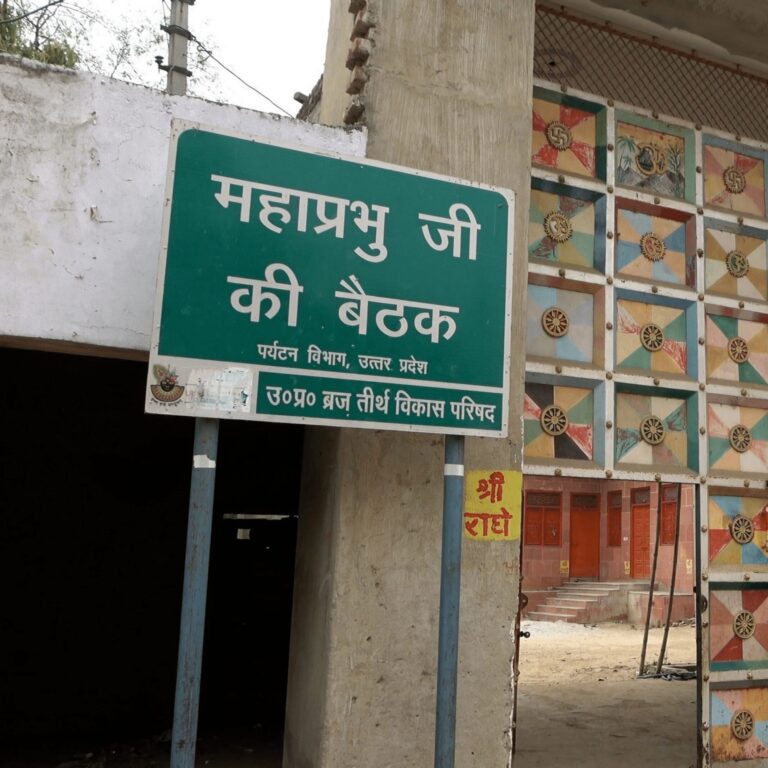

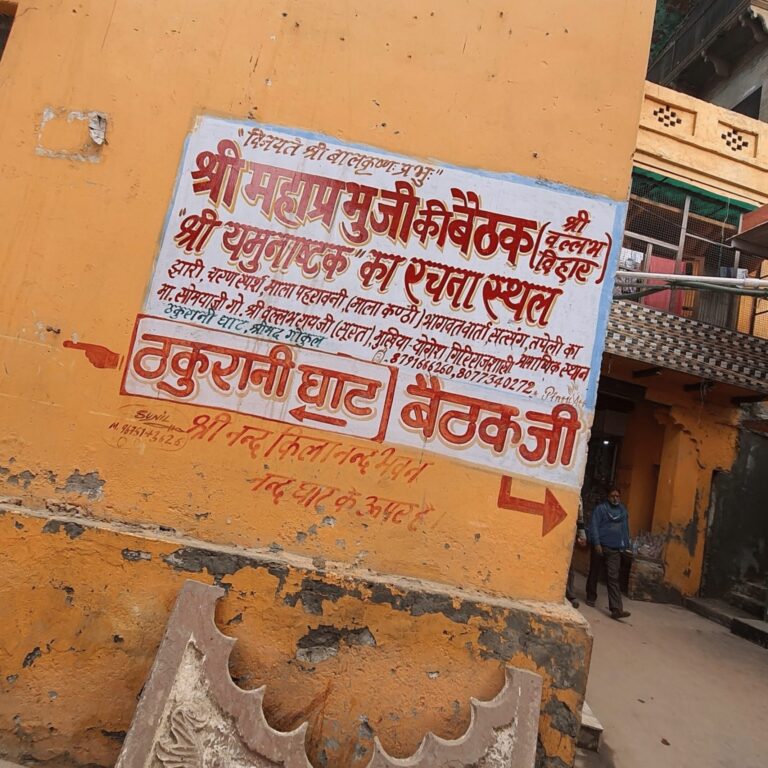
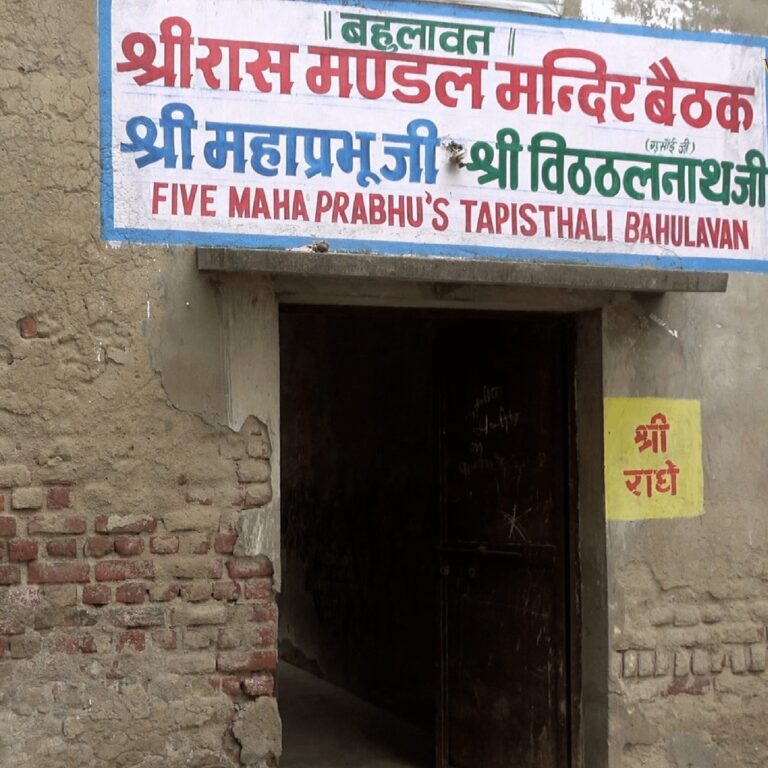
Prabhuji ki Baithak
Shri Vallabhacharya Ji settled in various villages, including Adel (Alakapuram), Charanat, and Brindavanam. Most of this time, he lived in Adel situated on the south bank of the Yamuna river near Triveni Sangamam (confluence of the holy rivers Ganga, Yamuna and Brahmaputra).
Throughout his time in these places, Shri Vallabhacharya Ji focused on spreading divine knowledge. He conducted Srimad Bhagavatam discourses at 84 different locations, staying for over a week at each. These places, where he shared the profound teachings of Lord Krishna’s divine love, became known as “Prabhuji ki Baithak”—the sacred spots where Shri Vallabhacharya Ji had personally stayed and taught.
Today, these Baithaks remain deeply revered by Vaishnavas.
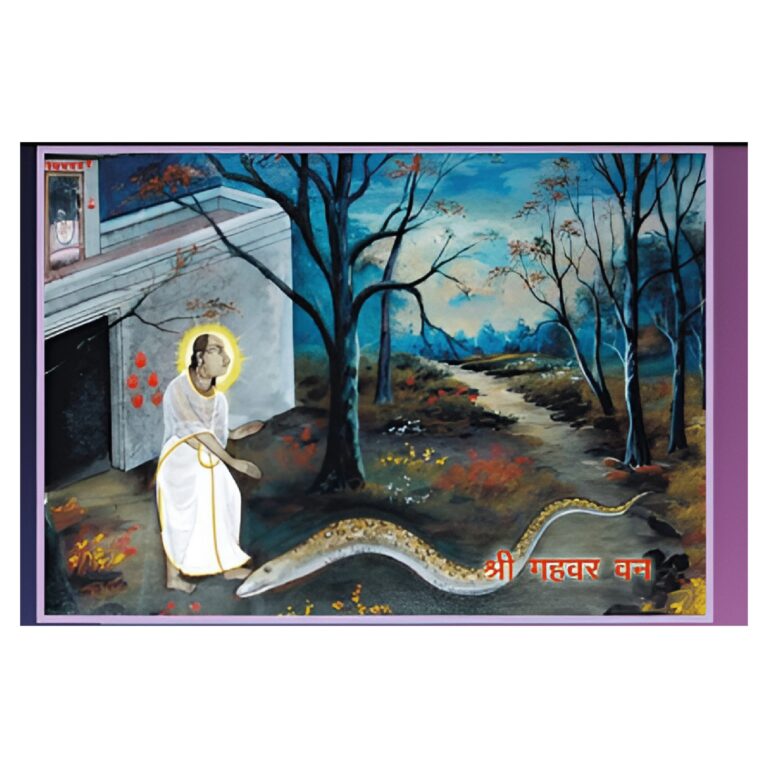
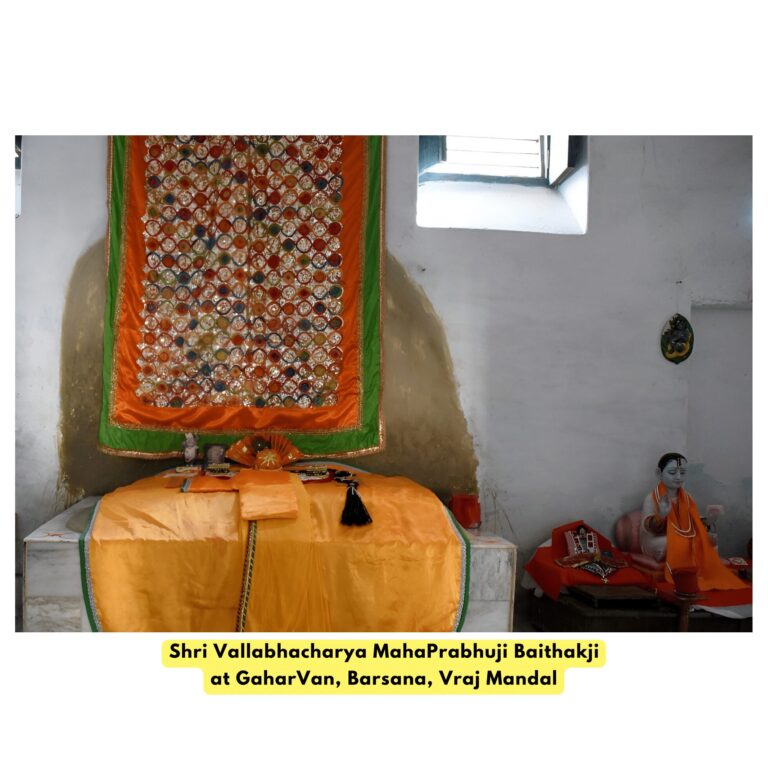
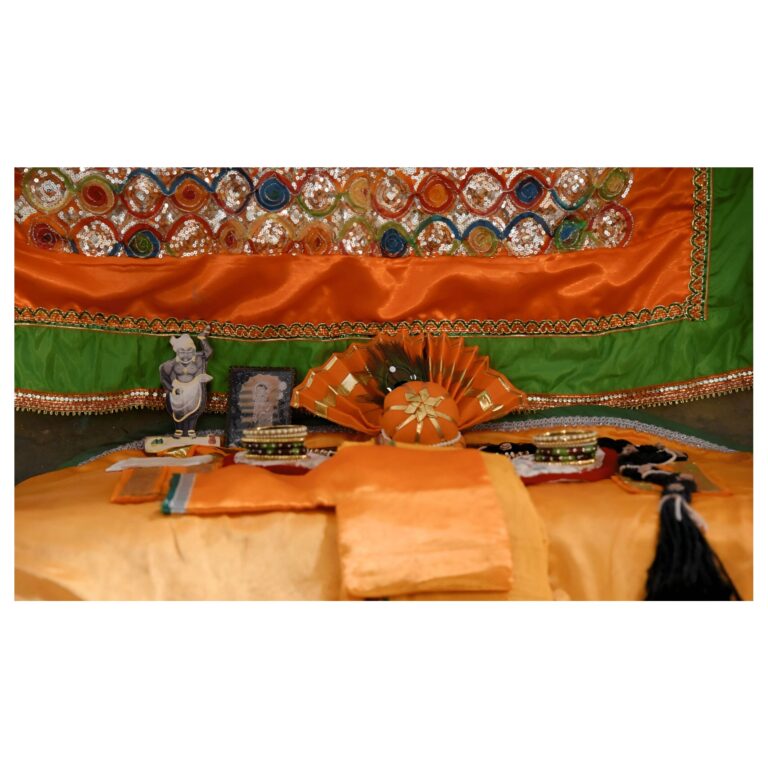
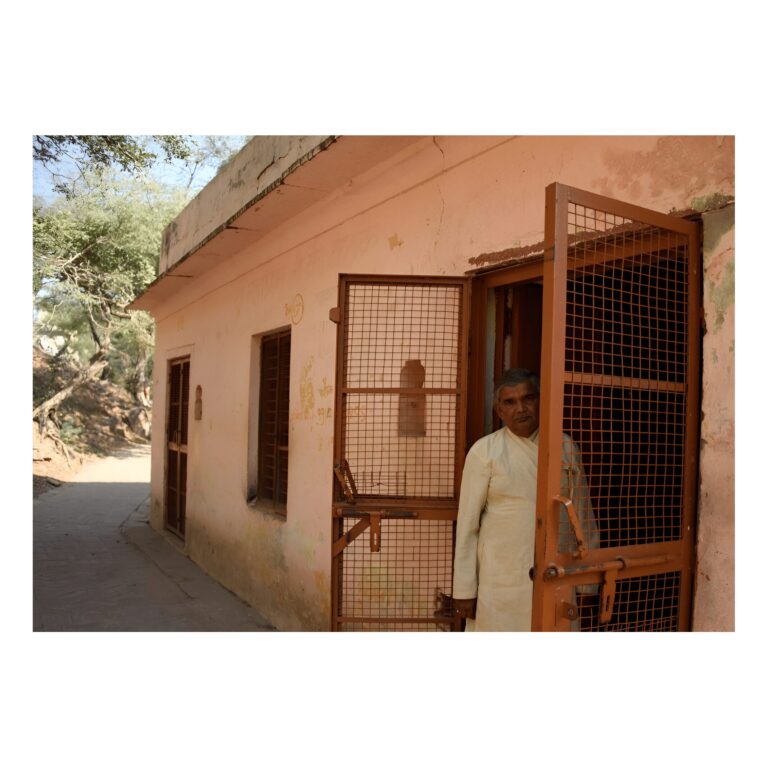
A Divine Miracle in GaharVan, Barsana
During one of his journeys, Shri Mahaprabhuji stayed by a serene lake and spent seven days reciting Srimad Bhagavatam. His presence filled the air with divine energy.
One day, as he wandered through the forest with his devoted follower Krishnadasa Ji Meghana, they came across a large python. What caught their attention was that the python was being mercilessly bitten by swarms of ants.
Seeing this unusual sight, Krishnadasaji was puzzled and asked,
“Why are these ants attacking the python so fiercely?”
With his infinite wisdom, Shri Mahaprabhuji revealed the truth:
“This python was once a sage in Vrindavana in his previous life. He had many disciples who trusted him, but instead of guiding them on the path of devotion, he misused their money for his own worldly pleasures. He neither worshipped the Lord nor encouraged his disciples to do so. As a result, both he and his disciples remained trapped in the cycle of suffering. Now, these ants are the very disciples who were misled by him. Their souls cry out in anguish, ‘You deceiver! You ruined our lives. If you had no power to liberate us, why did you make us your disciples?'”
Hearing this, Shri Mahaprabhuji’s heart was filled with compassion. He, the very embodiment of mercy, could not bear to see such suffering. Turning to his devoted follower Krishnadasaji, he instructed,
“Sprinkle holy water on both the python and the ants.”
As soon as the sacred water touched them, a miraculous transformation took place. The python and the ants were instantly liberated, their souls ascending to the heavens in celestial chariots, freed at last from their karmic bondage.
With this divine act completed, Shri Mahaprabhuji then continued his journey, taking a holy dip in Prem Sarovar, before proceeding toward Sanket Vana.
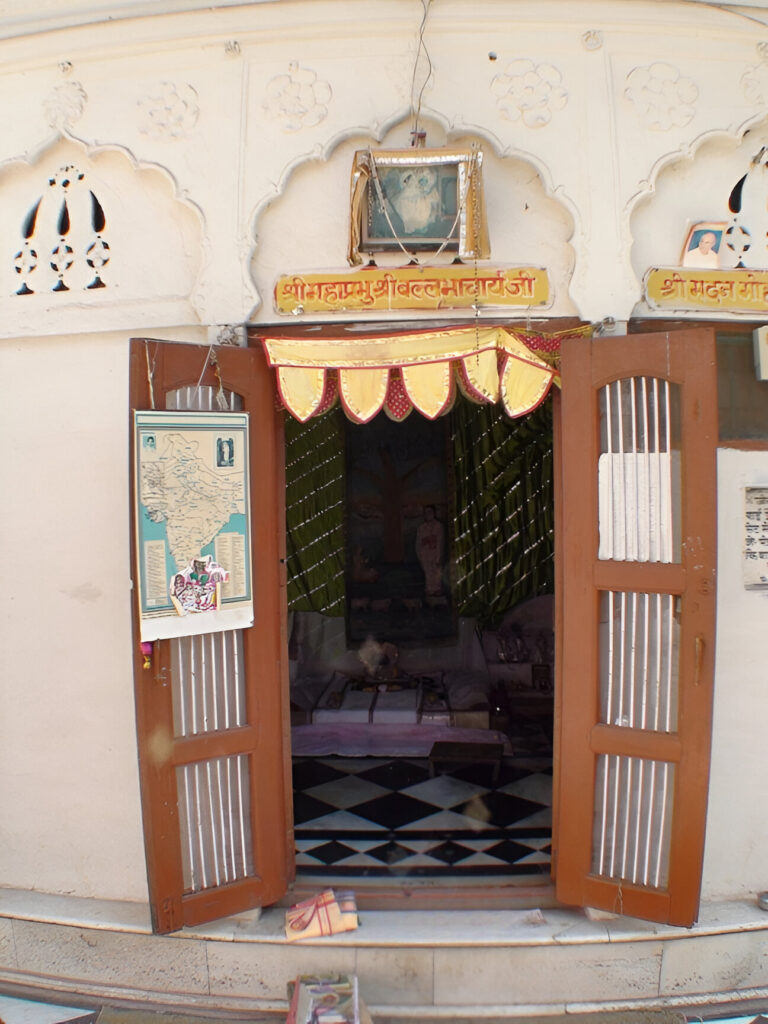
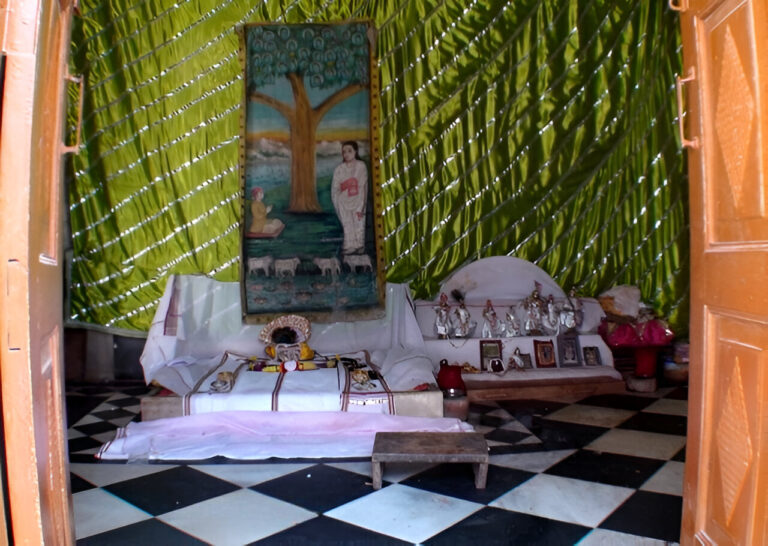
Shri Krishna in Every Leaf (Vrindavan Baithak)
While in Vrindavana, Shri Mahaprabhuji lovingly offered prasada to his devoted disciple, Prabhudasa Jalota. However, Prabhudasa hesitated and humbly declined, saying, “I have not yet taken my bath.”
Seeing his hesitation, Shri Mahaprabhuji smiled gently and recited a profound shloka:
“Vrikshe vrikshe venudhari, patre patre chaturbhuja”
(“The Lord Shri Krishna, who plays the flute, resides in every tree and every leaf.”)
He then explained, “The dust of this sacred land of Vraja is self-purifying. One who surrenders to it is already cleansed in the eyes of the Lord.”
In that very moment, a divine miracle unfolded. By Shri Mahaprabhuji’s grace, Prabhudasa was blessed with a divine vision of Shri Krishna, exactly as described in the shloka. Overwhelmed by this divine experience, his heart filled with devotion and realization.
Without hesitation, Prabhudasa gratefully accepted the prasada.
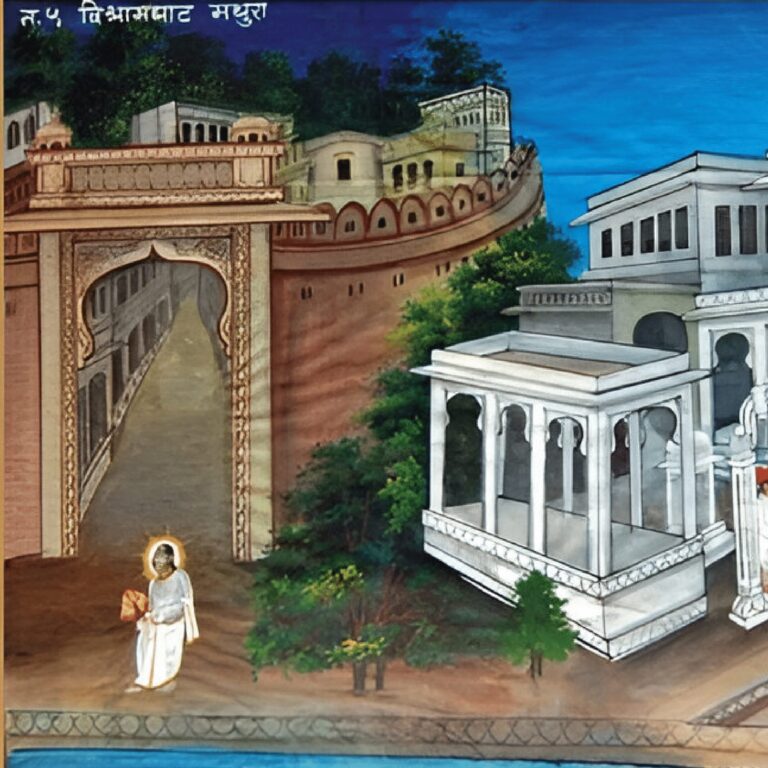
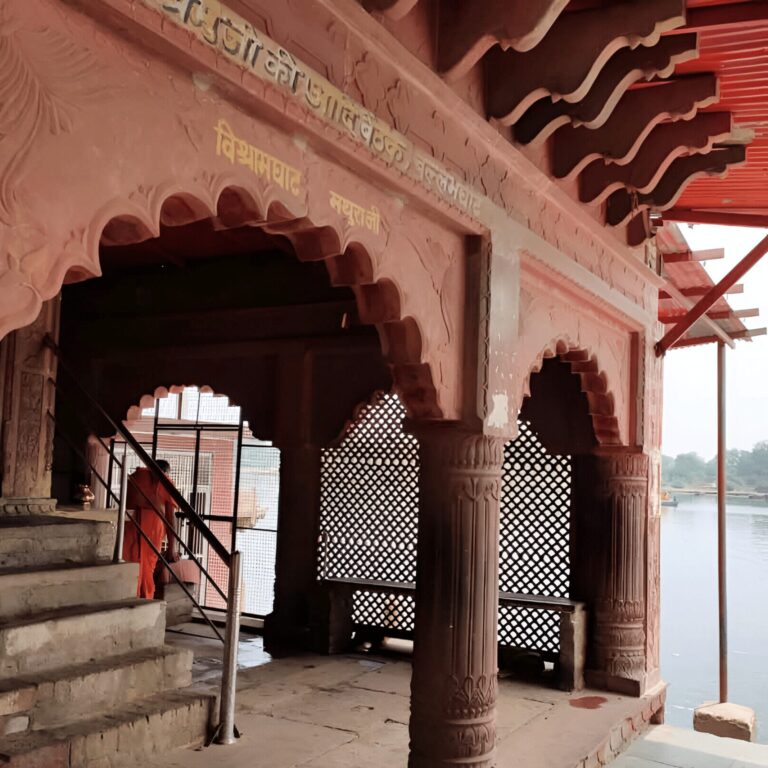
The Power of Shri Mahaprabhuji (mathura baithak)
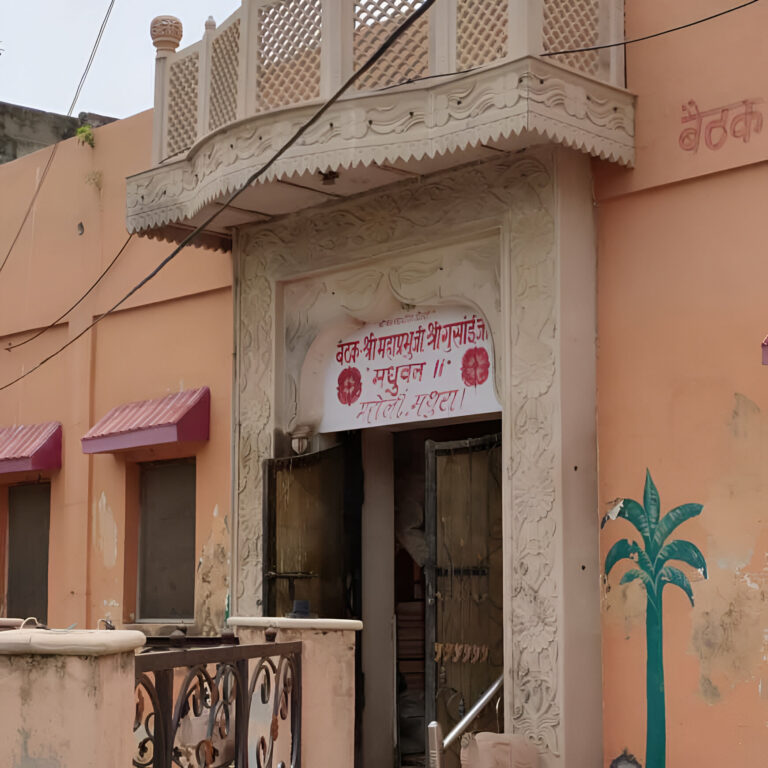
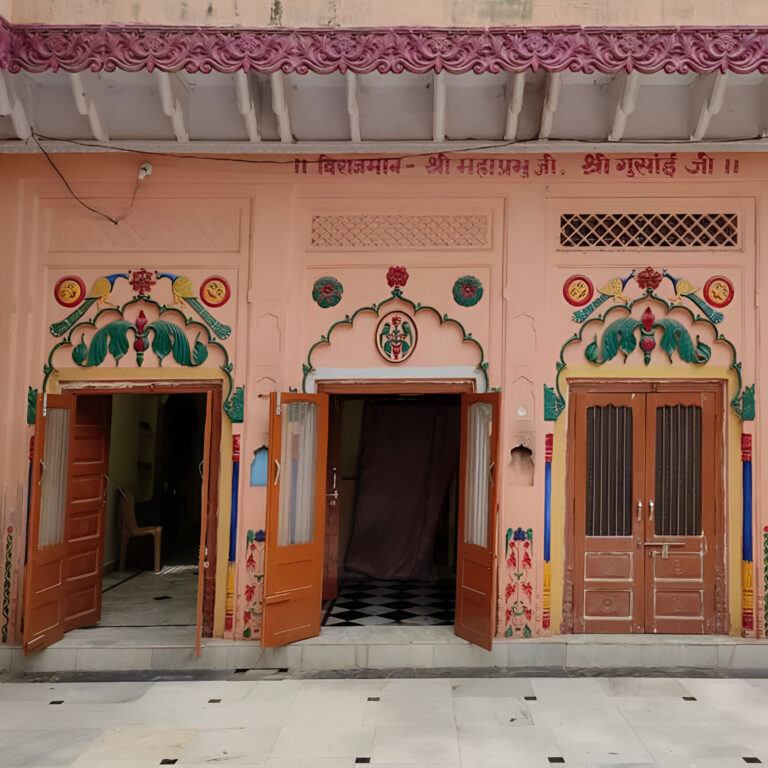
Lord Krishna Attends Shri Mahaprabhuji’s Discourse
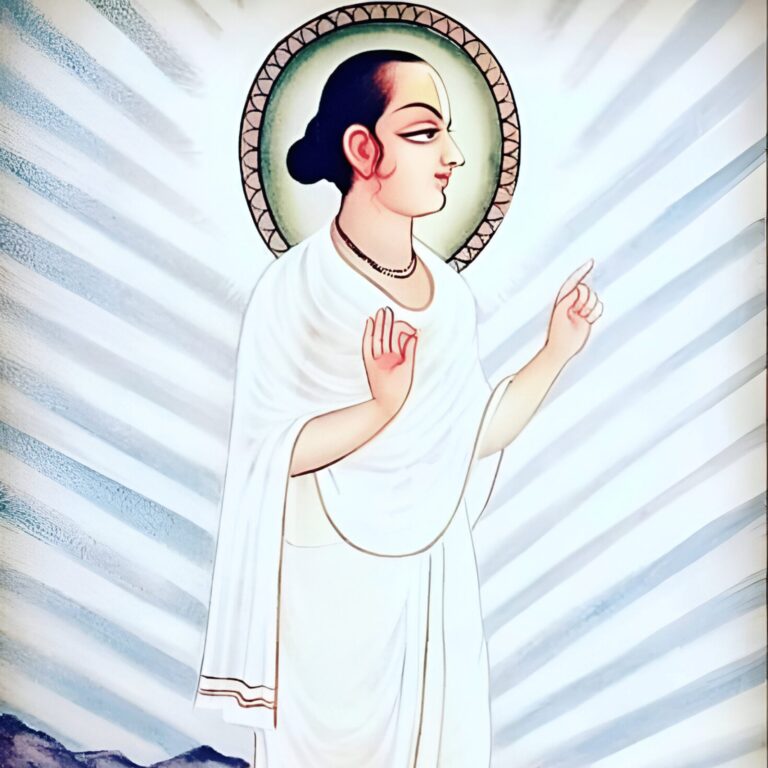
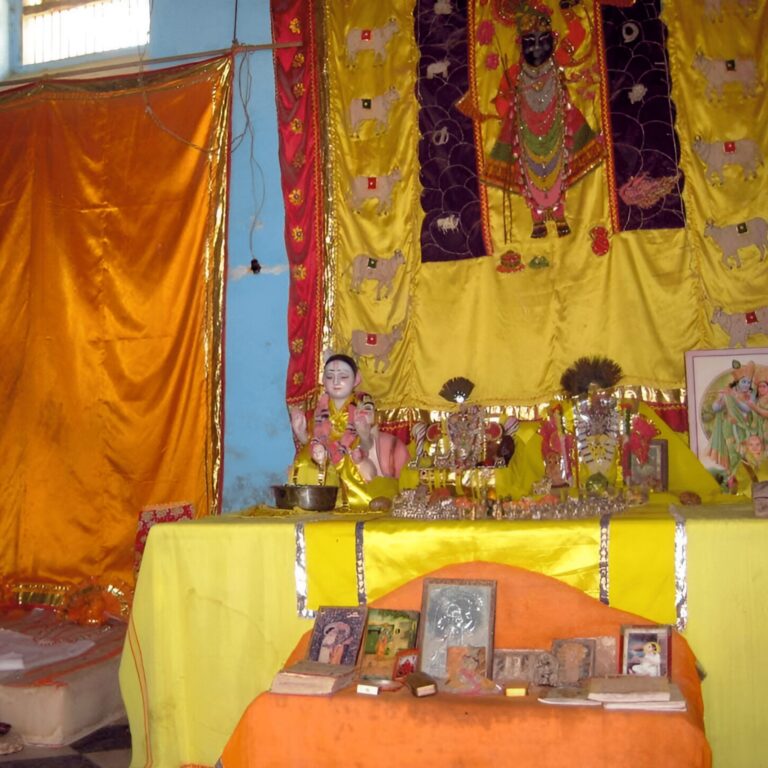
Shri Mahaprabhuji’s Divine Power (BAHULAVANA baithak)
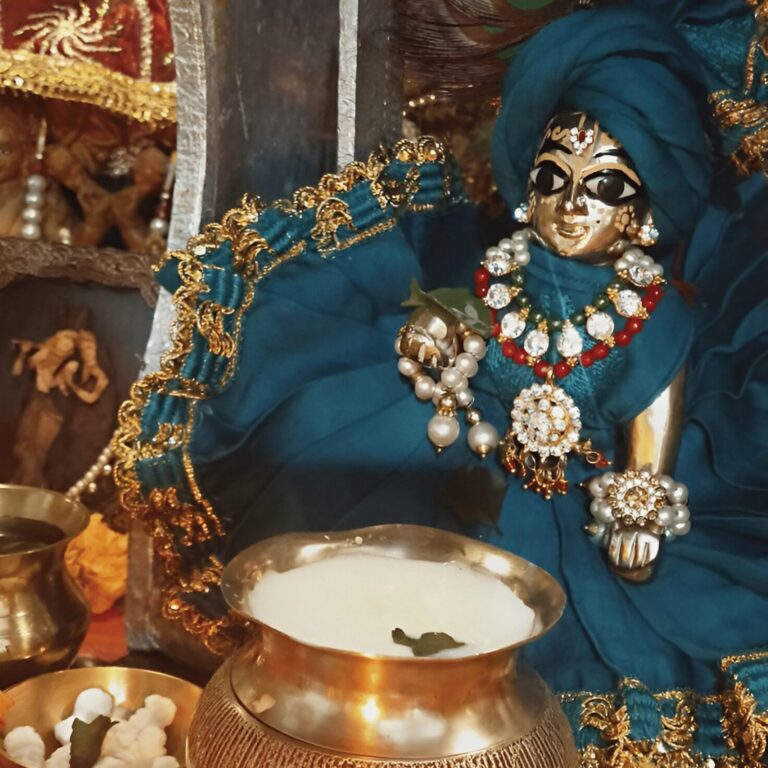
Thakurji’s Complaint: A Mistake in Seva
Shri Vallabhacharya Ji had two devoted disciples. One was Narayandas Brahmachari, who lived in Mahavan, a sacred place in Vraj. The other was Padma Rawal, a devoted follower from Ujjain.
Both disciples worshipped their beloved Thakurji with deep love and devotion. On separate occasions, each of them prepared and offered hot Kheer (a sweet rice pudding) to Shri Thakur Ji (Lord).
However, in their eagerness, they unknowingly served it while it was still too hot, causing Thakurji’s delicate hands and mouth to burn.
Feeling discomfort, Thakurji Himself complained to Shri Vallabhacharya Ji about the incident.
Moved by this, Shri Vallabhacharya Ji immediately summoned both disciples and gently advised them:
“Perform Thakurji’s Seva (service) with utmost care. Remember, our Thakurji is very delicate—He is the beloved son of Yashodaji. If He experiences even the slightest discomfort due to our negligence, it is not right.”
This incident served as a reminder that serving the Lord requires not only devotion but also thoughtfulness and sensitivity toward His divine presence.
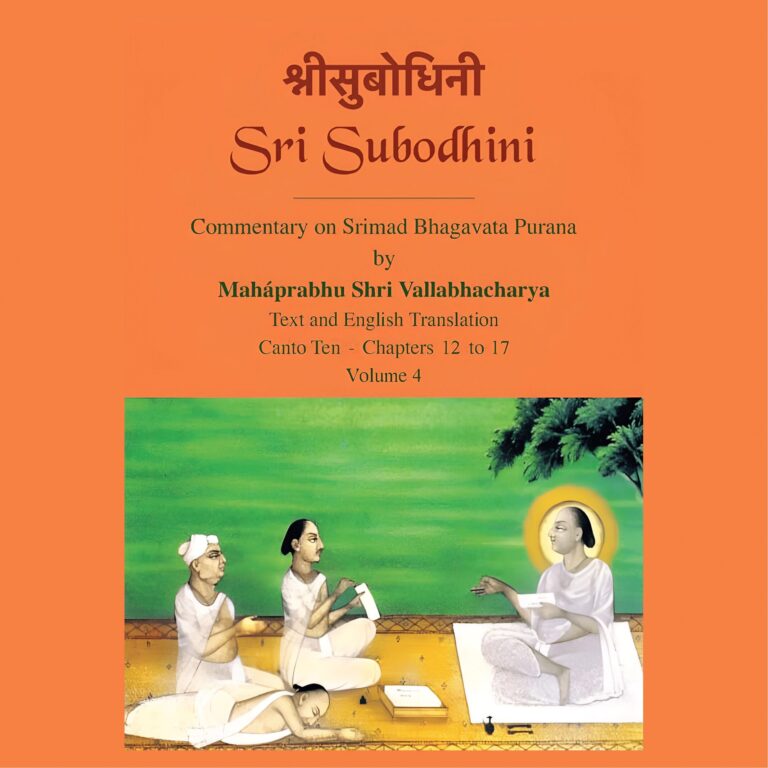
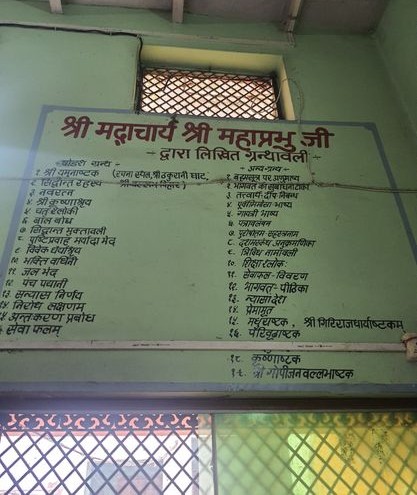
The Profound Writings of Shri Vallabhacharya Ji
- Shaastrarth Prakaran.
- Sarvanirnay Prakaran.
- Bhagavatarth Prakaran.
- Shri Yamunashtakam
- Balbodh
- Siddhant Muktavali
- Pushti Pravah Maryada
- Siddhant Rahasyam
- Navratnam
- Antahkaranprabhodh
- Vivekdhairyashraya
- Krishnashraya Stotram
- Chatuhshloki
- Bhakti Vardhini
- Jalbhed
- Panch Padyani
- Sanyas Nirnay
- Nirodhlakshanam
- Sevafalam
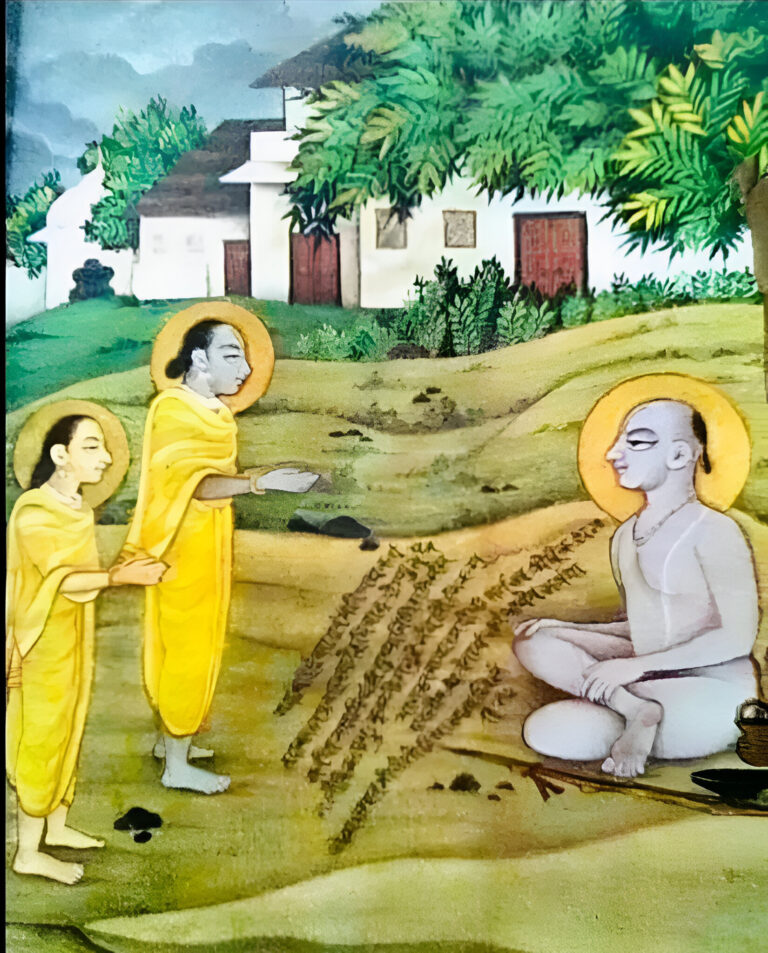

Shri Vallabhacharya Ji’s Divine Departure – The Asura Vyamoh Lila
यदा बहिर्मुखा यूयं भविष्यथ कथंचन।तदा कालप्रवाहस्था देहचित्तादयोऽप्युत ।। 1 ।।सर्वथा भक्षयिष्यन्ति युष्मानिति मतिर्मम।न लौकिकः प्रभुः कृष्णो मनुते नैव लौकिकम् ।। 2 ।।भावस्तत्राप्य स्मदीयः सर्वस्वश्चैहिकश्च सः।परलोकश्च तेनायं सर्वभावेन सर्वथा ।। 3 ।।सेव्यः स एव गोपीशो विधास्यत्यखिलं हि नः।। 3 -1/2 ।।

Shri Mahaprabhuji’s Final Moments on Earth

